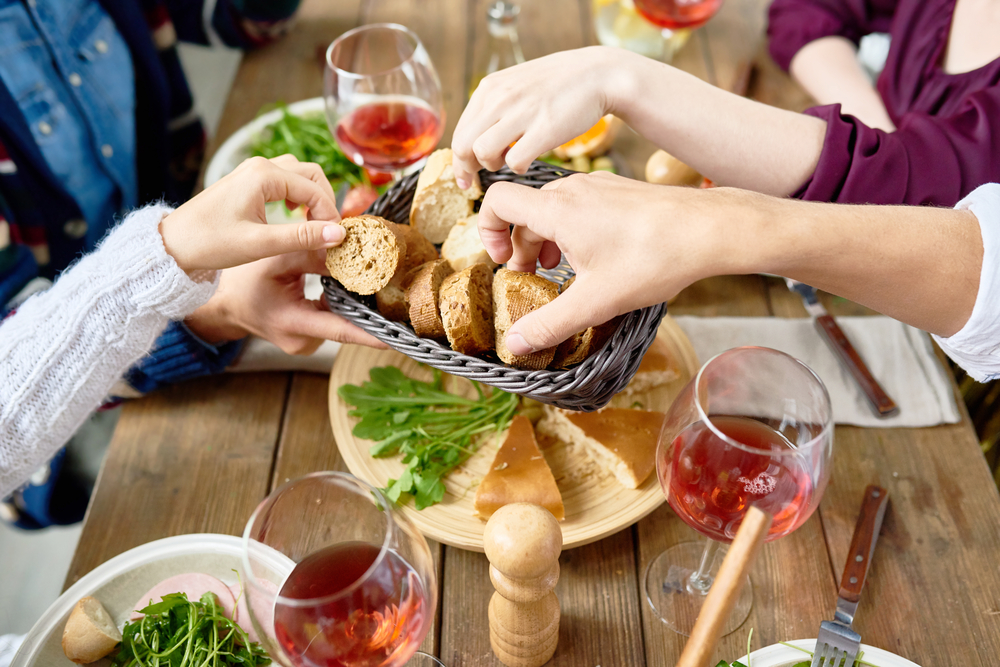I know from experience that cooking for everyone is not easy! Making meals for a mix of vegans, vegetarians, and meat eaters can be a unique challenge. It’s a balancing act to ensure everyone at the table is satisfied and well-nourished – and not get every pan in the kitchen dirty. Been there, done that!
You know I’m all about encouraging people to love meatless meals. But I also know everyone is at a different place in their journey, and that’s okay! I would never insist that someone try a food they are uncomfortable eating. (The exception being four-year olds. I’m not above bribery to make them try just one green bean.)
Here are a few of my best tips and tricks for feeding a mixed crowd while keeping your sanity.
Build-Your-Own is the Way to Go
One of the easiest ways to keep everyone happy is to build your menu around whole foods, give lots of options, then make everyone fix their own combination. Put out a mix of ingredients and let your gang make their own pizza, pasta, tacos, flatbreads, or paninis. Everyone can fill up on their protein of choice.
Make More Meals Around Beans and Legumes
Even the staunchest carnivore can appreciate a good bowl of lentil soup or a black bean enchilada! Cooking with beans is one of my favorite tricks – they are full of nutrition and a great way to meet the protein needs of every type of eater. A big pot of Minestrone soup or vegan chili can please almost everyone. Pro tip: double the recipe and freeze a batch for a future busy week.
Cook Up Some Versatile Ingredients
On Sundays, I like to batch cook some roasted vegetables and a whole grain (like brown rice, quinoa, or farro). Having these nutritional power foods on hand is a real time-saver during the week, as meat-eaters and plant-based peeps alike can throw them into a variety of dishes (meaning less prep time on weeknights). In a pinch, just throw the grains and veggies in a bowl with some fresh greens and let others add their preferred protein (beans, meat, or eggs). They can top with salsa or another favorite sauce to vary the flavor (one of my go-to’s is an aged balsamic vinegar – yum!).
Make Small Adjustments When Possible
Sometimes you can get away with an easy swap – like using vegetable broth for chicken broth in a recipe. You can also play with the timing of some ingredients – like leaving the cheese off the top of the casserole and letting non-vegans add it later. If you’re making a stir-fry, you could set aside a portion for the vegans and vegetarians before adding meat. Be on the lookout for ways you can be flexible.
Plan Ahead
Keep a few “emergency foods” on hand. For example, have canned soups in the pantry and a relatively healthy frozen meal or two in the freezer, just in case you don’t hit the mark. We don’t want anyone going hungry.
Always Communicate and Be Truthful
Finally, my best and most important tip is always to be transparent about ingredients. Think of food preferences like a food allergy – you’d never try to “sneak a little bit” of peanut butter past someone you knew was allergic to nuts, right? Tell your plant-based people if there is an egg in the banana bread. Admit that those delish Chocolate Zucchini Muffins have zucchini in them – you might just tempt a non-veggie lover to try something new! Let everyone make their own choices about what they eat.
Ultimately, cooking is about keeping your loved ones fed and healthy, not about labels. Focus on creating meals that are fresh, healthy, and as minimally processed as possible. Include lots of fruits and vegetables, beans and legumes, and whole grains. And try to have fun – cooking for a mixed crowd is a great way to flex your creativity in the kitchen!
Want more easy, brain-healthy recipes and smart wellness tips? That’s exactly what I dish out in The Scratching Post – along with a few extras just for my favorite people (that’s you!) No spam, no fluff, just good stuff. Sign up here and let’s do this!

+ show Comments
- Hide Comments
add a comment